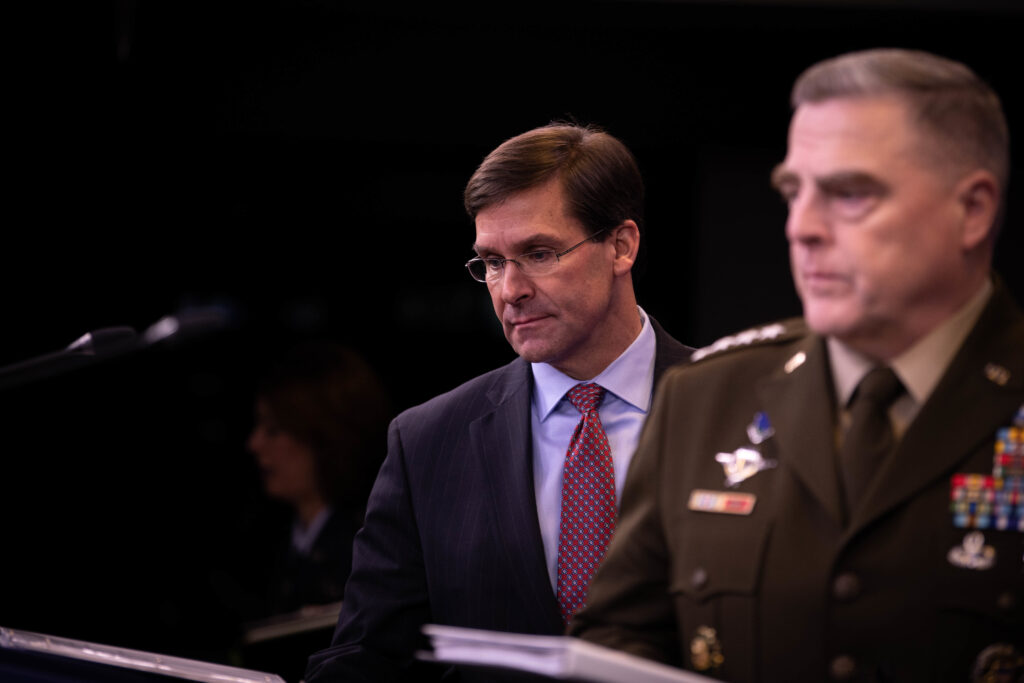
Defense Secretary Mark Esper and Chairman of the Joint Chiefs Gen. Mark Milley
WASHINGTON: In what must have been music to Air Force acquisition chief Will Roper’s ears, Defense Secretary Mark Esper today sang the praises of the service’s Advanced Battle Management Network (ABMS) as critical to future combat operations against Russia and China.
“This program is charged with creating the military’s Internet of Things and will integrate the joint force into a cohesive battle network, with the ultimate goal of linking any sensor to any shooter on the battlefield in real time,” Esper said, in what we believe to be the first time he has mentioned ABMS in public.
The verbal pat on the back at the biggest Air Force event of the year signals the program’s high priority for DoD writ large.
In a prepared speech to the Air Force Association’s 2020 conference, Esper touted ABMS not only as a linchpin of future Joint All-Domain Command and Control (JADC2), but also as a foundation for novel operational concepts for All-Domain Operations such as “dynamic force employment.”
Dynamic force employment, or DFE, Esper said, is a transformational idea that will “provide scalable options to employ the Joint Force, while preserving our capabilities for major combat.” He pointed to the Bomber Task Force as one of “one of the strongest and most visible examples” of dynamic force employment.
“In a high priority theater, the Indo-Pacific, B-1s and B-2s from multiple bases, along with F 15s, and F 35s, recently conducted joint maneuvers with Japanese fighters, as part of a large force exercise with the USS Ronald Reagan Carrier Strike Group,” Esper elaborated. “And just about six B-52s overflew all 30 NATO countries in a single day, integrating with a wide array of allied fighters to demonstrate our ironclad commitment to the NATO alliance. These are just two examples of how dynamic force employment provides strategic predictability to our allies, while remaining operationally unpredictable, to our foes.”
Esper explained that DFE and other new all-domain CONOPS will require forces “to exchange and synchronize information across systems, services and platforms” via the air, land, sea, space and cyberspace. The Air Force, he said, is “leading on this front” as it advances JADC2.
As Breaking D readers know, Chairman of the Joint Chiefs of Staff Mark Milley has tapped the Air Force to lead development of the JADC2 concept.






















